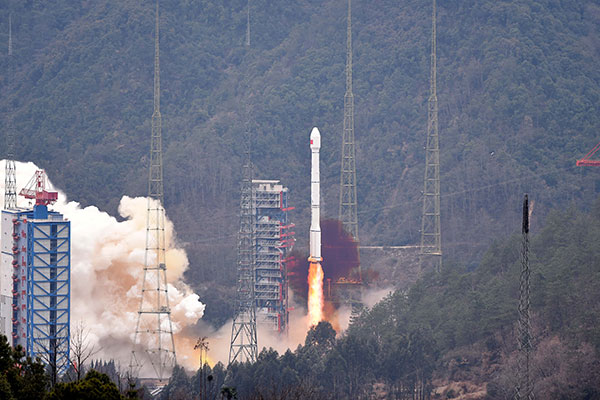BEIJING — China plans to launch nearly 40 Beidou navigation satellites in the next five years to support its global navigation and positioning network, a spokesperson said on Feb 3.
By the end of 2018, another 18 satellites will be put into orbit for Beidou’s navigation service, said Ran Chengqi, spokesperson of the Beidou Navigation Satellite System and also director of the China Satellite Navigation Office.
Ran said the positioning accuracy of the Beidou Navigation Satellite System inside China has reached five meters, with the improvement of a software algorithm and other technology development.
According to earlier reports, China planned to set up a complete Beidou system consisting of 35 satellites by 2020, which provided global coverage with positioning accuracy of less than 10 meters and timing accuracy of 20 nanoseconds.
China launched a new-generation satellite, the 21st in the Beidou Navigation Satellite System, into orbit on Feb 1.

A Long March-3C carrier rocket carrying the 21st satellite for the Beidou Navigation Satellite System lifts off from Xichang Satellite Launch Center, Southwest China’s Sichuan province, on Feb 1. China launched a new-generation satellite into orbit that will support its global navigation and positioning network at 3:29 pm Beijing Time on Feb 1. [Photo/Xinhua]
The first 16 Beidou satellites formed a network that only covered China and nearby regions. The first new-generation satellite, the 17th in total, was launched in March 2015 to help the network transition from regional to global coverage.
Once in orbit, the satellite launched on Feb 1, the fifth of the new generation, will join its four predecessors in testing inter-satellite cross-links and a new navigation-signalling system that will set the framework and technical standards for global coverage.
China plans to expand the Beidou services to most of the countries covered in its Belt and Road Initiative by 2018, and offer global coverage by 2020.
